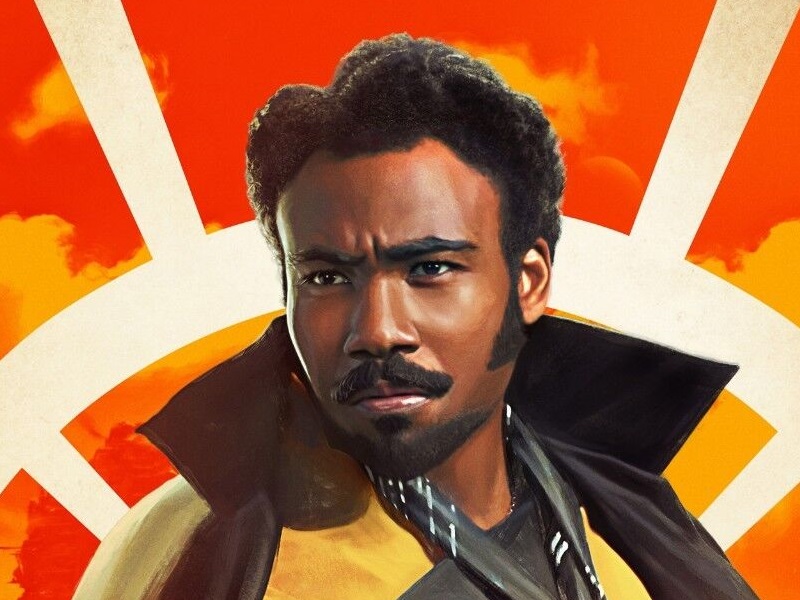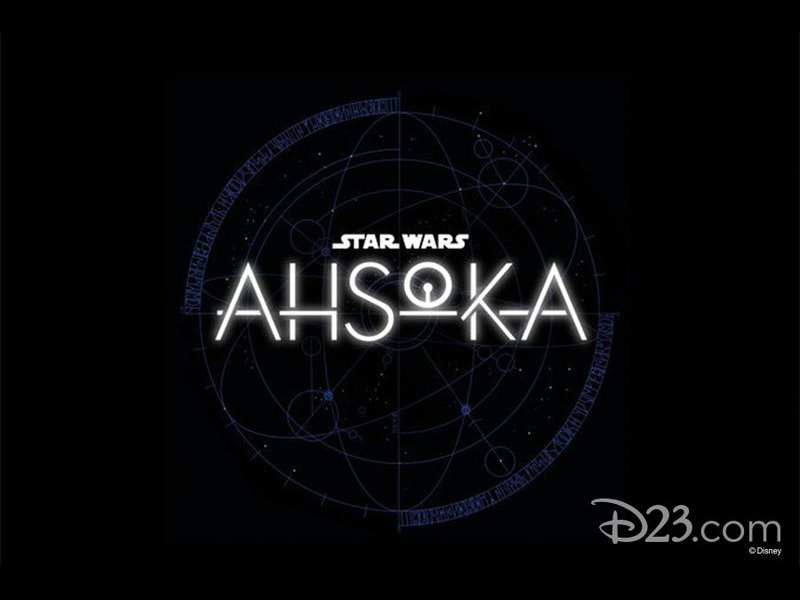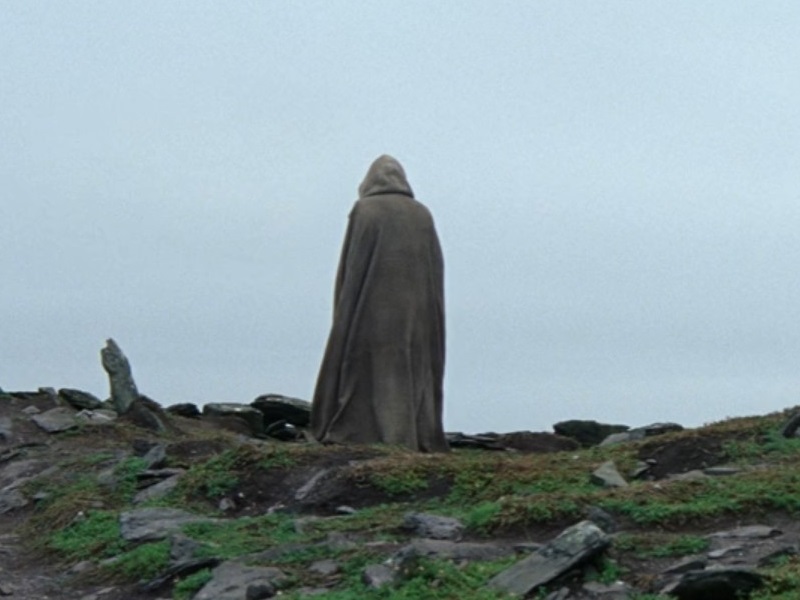Advertisement
Where to Begin?
Have you been to Disney+ recently and seen the Star Wars section? It's quite the tapestry of viewing options. Having all this content in one place at my fingertips is a dream come true. I couldn't have imagined as a kid being able to watch these movies anytime, anywhere, at the touch of a button.
I sometimes wonder, however, what this must look like to someone who's not very familiar with Star Wars or just new to it all. I'm not the only one who has considered this. A fan on Twitter recently posted:
Can you imagine coming in new to the Star Wars franchise nowadays, and watching it all in chronological order, including Obi-Wan Kenobi and Rogue One?
— James Coruscanti Diner III (@aDillonDev) July 8, 2022
And having alllll that emotional investment in Alderaan before A New Hope?
There's a powerful idea there. What if you're new to this world and unsure where to begin? Perhaps you're familiar with some of the movies but want to have a fresh start—or just get reacquainted? Or maybe you're completely new to it altogether. This presents a common question: "In what order should a person watch the movies?" It's a simple enough question but with many answers.
Fans have debated how to present Star Wars to family and friends by contemplating that same question and either offering a suggestion or outright dictating what order they should watch. While my answer is: "Any order you want!" that answer doesn't really help inform your decision.

Star Wars Episode I: The Phantom Menace — The earliest movie in the timeline shows when the Jedi first meet Anakin Skywalker, a little boy with hidden power.
If you ask Siri or Alexa that question, you'll get a bevy of suggestions and explanations that can often spoil the story before you start. There are two common options: release order or chronological order. But you'll quckly find another called the "machete order" and more recently, a Vanity Fair article gave a new approach with a "Rey" order stating, "Instead of priming new viewers with the entire history of the galaxy before launching into the most recent sequel trilogy, why not enter the story as Rey does, with only a vague grasp of what came before?"
As a fan, it's fun to think about what the preferred order of viewing should be. Like many others, I often cite "release order" as my recommendation—but upon deeper reflection, I realize that comes simply from my personal experience and may not translate well to others. I happen to be old enough to have seen these in the order that they were originally released in theaters, but is it the best order? Lately, I've been second-guessing my go-to answer.

Star Wars Episode II: Attack of the Clones — Anakin Skywalker's Jedi training under Obi-Wan Kenobi halts when the threat of war builds up with the emergence of mysterious cloned troops.
Note: For simplicity sake, the following sequences only take into account movies released in theaters (except The Clone Wars pilot film) and not the TV/streaming series.
For reference purposes, here are the titles listed in these order sequences here:
- Episode I – The Phantom Menace (1999)
- Episode II – Attack of the Clones (2002)
- Episode III – Revenge of the Sith (2005)
- Episode IV – A New Hope (released originally in 1977 as Star Wars)
- Episode V – The Empire Strikes Back (1980)
- Episode VI – Return of the Jedi (1983)
- Episode VII – The Force Awakens (2015)
- Episode VIII – The Last Jedi (2017)
- Episode IX – The Rise of Skywalker (2019)
- Rogue One: A Star Wars Story (2016)
- Solo: A Star Wars Story (2018)
The Machete Order
As mentioned above, one proposed order is to start with the first episode of the most recent trilogy, The Force Awakens. The sequence following it resembles the "machete" one introduced several years before Disney acquired Lucasfilm. So, let's take a look at the "machete" order first.

Star Wars Episode III: Revenge of the Sith — As war sweeps over the galaxy, Anakin Skywalker gets pulled into the center of the sinister plot behind the conflict and must choose his allegiance.
I believe the term, "machete" was meant to imply that the sequence was cut up, like taking a knife to it, slicing into pieces, and finally putting it back together in a new way. In short, this order tries to keep the focus on Luke Skywalker as the central and overall protagonist.
Intent of the Machete Order Sequence
The intent of this order is to retain the original first film released (A New Hope) as the first to be watched and to also retain the shocking plot revelations of The Empire Strikes Back. It then cuts the sequence and places Attack of the Clones (Episode II) and Revenge of the Sith (Episode III) next in order to serve as a kind of flashback to provide details on the backstory of Darth Vader. Finally, it resumes the main storyline with the original finale of Return of the Jedi to finish Luke's story and give viewers a fuller picture of Luke's heroism that contrasts the fall of Vader.

Solo: A Star Wars Story — While the Empire reigns supreme, a young outlaw named Han tries to find his place in the galaxy while struggling with his life in the criminal underworld.
The machete sequence goes like this:
- Star Wars (or Episode IV: A New Hope)
- Episode V – The Empire Strikes Back
- Episode II – Attack of the Clones
- Episode III – Revenge of the Sith
- Episode VI – Return of the Jedi
Note: The updated version of this puts episodes VII through IX at the end, if so desired.

Rogue One: A Star Wars Story — The Rebellion acquires the help of Jyn Erso who is the key to obtaining secrets about the Empire's ultimate weapon that is being built by her father.
Why You Might Want to View in the Machete Order
If you don't want to watch the movies in release order or chronological order, this is a great way to structure the story. It's also the shortest since it leaves out The Phantom Menace (Episode I ), primarily since it has less impact on Luke's story, and leaves the final trilogy as optional.
The Rey Order
The Vanity Fair-proposed "Rey" order takes its cues from the machete order and places the focus on Rey instead of Luke. We enter the story like Rey with just an inkling of what Star Wars and the Skywalkers are all about. We've heard things about Jedis and Vader and Han Solo that happened in the past, but do those events shape the current state of affairs?

Star Wars Episode IV: A New Hope — An older Obi-Wan Kenobi begins to train Luke Skywalker to become a Jedi while the Empire presses its advantage to wipe out the Rebellion.
Intent of the Rey Order Sequence
The order puts Rey as the primary protagonist and places previous movies as flashbacks (similar to machete order) to give backstories on characters that Rey meets, and then finishes her journey at the end.
- Episode VII – The Force Awakens
- Solo: A Star Wars Story
- Rogue One: A Star Wars Story
- Episode IV – A New Hope
- Episode V – The Empire Strikes Back
- Episode I – The Phantom Menace
- Episode II – Attack of the Clones
- Episode III – Revenge of the Sith
- Episode VI – Return of the Jedi
- Episode VIII – The Last Jedi
- Episode IX – The Rise of Skywalker
Why You Might Want to View in the Rey Order
Again, if you don't want to just go in release order or chronological order, and you like the approach of Rey as a newcomer to the story as you look back on the past of Star Wars like she does, then this is an interesting structure that includes all the films.

Star Wars Episode V: The Empire Strikes Back — Luke Skywalker continues his Jedi training with a new master while the Empire hunts down the Rebel fleet and puts Luke's friends in grave danger.
The Release Order
Proponents of release-order viewing often wish the Star Wars newbie to—hopefully like us—experience the startling revelations that surprised us back in the day. Every episode brings its fair share of surprises but one plot point in particular shocked us good. We just can't have that as a new experience again and so we want to live it again vicariously through someone seeing it for the first time.
The big problem with this is that the secret is hardly a secret anymore. Darth Vader's words are woven into pop culture. The closest we come to watching these special moments anew is with young people, often our own children. When is the right time to show them Star Wars? You wait too long and they'll know all about it already. Don't wait long enough and they're too young to understand the impact. Don't we often discuss when to take our kids to Disney parks? Are they too young to remember it, are they too old to enjoy it? Adult Disney park fans can hardly wait too long!

Star Wars Episode VI: Return of the Jedi — While the Rebellion takes a risk in an all-out attack against tyranny, Luke Skywalker stands alone against the evil heart of the Empire in an attempt to bring it down from within.
Intent of the Release Order Sequence
To try and re-create, even partially, the feeling of suprise and anticipation people had as these movies dropped. It's a way to see how the story grew and morphed over time and offers a chance to think back to the culture surrounding the films in their days.
- Star Wars (or Episode IV: A New Hope)
- Episode V – The Empire Strikes Back
- Episode VI – Return of the Jedi
- Episode I – The Phantom Menace
- Episode II – Attack of the Clones
- Episode III – Revenge of the Sith
- Episode VII – The Force Awakens
- Rogue One: A Star Wars Story
- Episode VIII – The Last Jedi
- Solo: A Star Wars Story
- Episode IX – The Rise of Skywalker
I showed my kids the movies in release order in an attempt to capture the magic. They liked the movies OK but the impact of the Vader revelation scene wasn't the same as what I felt. It's not because they couldn't understand it—they did fine, but they thought of it differently. They simply thought it was a trick because Vader had been telling Luke to use his hatred and was just generally being evil and lying all the time. They saw it as a characteristic of the story, not the plot twist that we didn't see coming. While they did know that it was important, it wasn't the only thing that was important to them.

Star Wars Episode VII: The Force Awakens — With a new evil regime, the First Order, rises to control the galaxy, a lone scavenger named Rey finds herself swept into the conflict where she discovers that the near-forgotten legends of the Jedi may lie with her.
Why didn't that scene have the same impact I felt? I think because, back in the day, we had to wait three years before we saw the story continue. That was a very long time to wait for the next chapter and to continually have that story churn inside us. Anticipation grew and grew to such great heights! We dwelled on it a long time and it stewed in our minds and we grew up during that time. We had birthdays between movies! Audiences now don't have to wait that long.
Why You Might Want to View in the Release Order
It's often the way people will present Star Wars to family and friends and is a great way to share the journey and be kids again together.
The Chronological Order
My kids recently rewatched the main nine episodes in numeric/chronological order. The motivation wasn't one of nostalgia, but out of a desire to experience the stories fully "because we didn't understand them when we were younger," they said. Maybe I showed them the movies at too young an age. I forget that between Star Wars and Empire Strikes Back, I aged three years. For my kids, it was a week.

Star Wars Episode VIII: The Last Jedi — The Resistance, a small group of freedom fighters, attempt a daring escape from the First Order while Rey must learn the truth of the Force from the last Jedi.
Intent of the Chronological Order Sequence
Storytellers craft their tales to reveal information at certain times for dramatic effect. Knowing what happens beforehand (when watching in release-order) affects that desired emotional response. However, George Lucas went out of his way (with special editions and constant re-tweaking) to make things fit into a larger scheme more seamlessly. He always wanted the saga to be one long story. With each one you watch, you take a step back to see the larger picture. Like stepping back to take in a large painting in a gallery, it matters where you stand.
- Episode I – The Phantom Menace
- Episode II – Attack of the Clones
- Episode III – Revenge of the Sith
- Solo: A Star Wars Story
- Rogue One: A Star Wars Story
- Episode IV – A New Hope
- Episode V – The Empire Strikes Back
- Episode VI – Return of the Jedi
- Episode VII – The Force Awakens
- Episode VIII – The Last Jedi
- Episode IX – The Rise of Skywalker
Why not view it in theatrical release order? We consume media in such a different way than when I was little. Would I make my kids wait three years to watch the next movie that I already have sitting on my DVD shelf? Those years we waited between movies... we waited on them together. We were all in the same ship. It's not the same for my kids, where they and their friends are interested in contemporary media together—not some 30-year-old set of movies.

Star Wars Episode IX: The Rise of Skywalker — An ancient evil thought to be long-gone returns to destroy the Resistance and seize the galaxy while Rey makes a final stand against this Final Order.
There's no way to properly re-create my experience, and everybody's experience back then. We wish it could be—we wish to experience something like going to a Disney park for the first time or revisit what the country was like when one of the parks first opened. We bring our kids there hoping they have that same experience, but the parks sit in a different place in their world. There are more entertainment enterprises in the world today than there were back in 1955 and 1971. So while we do need to pass on these experiences, we need to let them find their own new experiences to shape their own outlook on life and their inward discovery of themselves. The same goes for Star Wars and pop culture media of the past.
Why You Might Want to View in the Chronological Order
You see the overarching themes grow before you. You see a bright and colorful The Phantom Menace (Episode I) and see it all get darker and grayer as the saga unfolds into darkness; you see how it struggles to restore that once-bright time. It all starts at the beginning of the Skywalker journey, before the Empire, and starts with an innocuous "trade dispute" that strangely becomes the catalyst for both galactic and personal events to follow. The machinations of the Emperor become the primary antagonistic force as well, which brings to light the problems of evil and how to confront them.
What's your preferred sequence? Which would you like to try? Which would you recommend to others?




Comments
This is an interesting question to an extent, but I will be honest and say I don't see myself investing the amount of time required to watch all of the movies in the various options presented. I also think for those of us who know the stories like the back of our hands, the order is hard to "un-learn" since we've experienced them as released. Similar to how you say for your kids, the impact of the big twist is less when seeing Empire.
The Rey Order, while interesting, IMO is way too much flashback content to watch all 8 of the other movies after watching TFA before then watching TLJ and TRoS. I'd consider that way too much of a gap in between watching the stories with the new characters.
That may be an unfair characterization on my part though, I sometimes struggle with long drawn out story lines in general (even if they are excellent): I was not a huge fan of the Lord of the Rings trilogy from the early 2000's due to their length either. I get that they are classic beloved stories that were translated to film, but I still could barely sit through them due to their length.
Attachment 9299 Hopefully this T-Shirt I'm wearing answers that question.